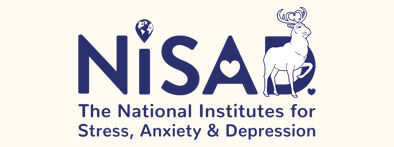Table of content
Benefits of Mindfulness Meditation
Physical Health
Creativity and mental agility
Relationships
Emotional wellbeing
Myths and Misconceptions
Meditation requires you to be spiritual or is a spiritual practice, or maybe counter to the beliefs of your faith.
Meditation is a modern fad
Your mind should be quiet when you meditate
You should feel calm when you meditate
The aim of meditation is to fix your focus on a particular point
It’s likely that you’ve heard about the health benefits of meditation – or at least some of them.
The benefits range from helping us to reduce our anxiety, stress and depression, supporting our immune system and improving our memory, to potentially lengthening our lives!
What is mindfulness and what is meditation?
Mindfulness is a “way of being” in our lives. It has many influences on how we perceive our sense of well-being.
For example, we experience more calm and happiness, it helps us to address life’s inevitable struggles and challenges more skilfully, we deal with pain differently. It can improve our relationships – as well as improve our mental and physical health.
The term meditation is used in this blog to refer to mindfulness meditation.
There are various forms of mediation and it’s likely that all of them have health benefits.
Studies that have shown to bring about the health benefits mentioned above are based on mindfulness meditation – this is the type of meditation that has been studied the most extensively.
Benefits of Mindfulness Meditation
Physical health
- Supporting the immune system
- Increasing sleep quality and reducing
- insomnia
- Reducing the perception of physical pain
- Reducing the severity of symptoms in
chronic disease (i.e. Chronic Fatigue Syndrome; Fibromyalgia, Cardiovascular disease; IBS)
- Improves cellular health – potentially leading to a longer life
Creativity and mental agility
- Increases motivation and learning
- Improves emotional regulation – this promotes clear thinking, openness to other ideas and perspectives
- Greater capacity for problem-solving
- Improves memory and attention
Relationships
- Improves self-awareness and self-regulation so we are less reactive
- We deal with conflict better
- Increases pro-social behaviour and empathy
- Increased satisfaction, closeness and acceptance in our personal relationships
Emotional wellbeing
- Improves symptoms of stress, anxiety and depression
- Reduces stress hormones
- Increases feelings of connection with others and reduces feelings of loneliness and isolation
- Develops self-compassion, which can reduce self-criticism
- Increased emotional resilience
- Reduces repetitive negative thinking
Myths and Misconceptions
If you’re learning (or thinking about learning) to meditate, there may be misconceptions and myths to navigate in the beginning. These can lead to confusion or even the decision that you “can’t meditate”.
In fact, you can’t meditate in the “right” way, therefore, it’s impossible to meditate in the “wrong” way.
Knowing certain information from the get-go can be really helpful so I’d like to bust the myths and to dispel the misconceptions.
So, what are some of the most common myths and misconceptions?
1. Meditation requires you to be spiritual or is a spiritual practice, or maybe counter to the beliefs of your faith.

This has probably arisen from the fact that mindfulness meditation has its roots in Buddhism.
However, meditation requires you to have no belief in Buddhism whatsoever – or any particular belief at all.
Meditation is simply a tool that has been adopted to develop an understanding of how the mind works and, through the process of meditation, change the neural networks in the brain and bring about health and wellbeing benefits.
You can be atheist or deeply committed to a faith. You can be spiritual or not feel a single spiritual bone in your body. It doesn’t matter – meditation is secular and is suitable for anyone, whatever their beliefs, or lack thereof, might be.
2. Meditation is a modern fad
Meditation may seem like it’s a new craze. And it’s true it’s been growing in popularity in Western culture since Jon Kabat-Zinn introduced it to modern medicine in the late 1970s – over the last ten years that growth has been exponential.
However, the practice of meditation in Eastern traditions goes back at least 2500 years.
The wisdom and health benefits that meditation develops have held this practice in place for generations.
Mindfulness meditation is now being substantially studied by science and the findings are driving this blossoming of new interest – for a very old practice.
3. Your mind should be quiet when you meditate
One of the fundamental misconceptions about meditation is that your mind needs to be quiet or free from thought for you to be “doing it right”.

This couldn’t be further from the truth.
One of the central themes of mindfulness, and something it’s our intention to develop through meditation, is to be with however we are “in the moment” – and if that’s experiencing a busy mind then so be it.
What can happen as you become more of an experienced meditator is that your mind settles down and becomes less of a distraction.
This is almost like the effect of turning down a radio – the noise is still there but it’s more in the background.
The intention of meditation is never to empty your mind of thoughts or make thoughts go away, rather, it’s to notice thoughts (and any reactions) in as non-judgmental a way as possible and to allow them to pass in their own time.
4. You should feel calm when you meditate
This follows on from the point above.
Developing mindfulness through meditation allows us, as best we can, to be with however, we are from moment to moment.
When we practise meditation we are becoming more aware of how we are “right now”.
Practising noticing and allowing ourselves to be however we are in the moment is then what we bring from our formal meditation practice into our daily lives.
This ability to be as we are in the moment allows us to reduce our sense of internal conflict and the drive to want things to be different “right now”.
It helps us to cultivate wisdom and it can give us some space to look at things from a different perspective. It allows us to respond with insight rather than react automatically. It also means we are more able to notice the small, wonderful things in life that we may otherwise miss.
A happy by-product is that we can sometimes experience calm during or after meditating – but it’s not the goal. If we try to achieve a particular state of calm or bliss or expect it to happen, we can end up in another situation where we think we are doing it wrong, or that we have failed in some way.
5. The aim of meditation is to fix your focus on a particular point
During mindfulness meditation, you will most often have an anchor or point on which to rest your attention.

This commonly might be the breath, body sensations, sounds or thoughts.
Even though we have this anchor point, the aim of the practice is not to strive to fix your attention on this place.
This is often a misconception of “going wrong” in the beginning because your mind repeatedly wanders off from where you intended it to be.
This mind-wandering is VERY normal. It’s just what minds do.
Once we notice the mind has wandered, the point where you are back in the present moment, it’s our task to gently but firmly bring the mind back to where we intended it to be – and to begin again.
And then to repeat this again and again and again.
Mindfulness meditation is the willingness to begin over, again and again.
You may have heard mindfulness being referred to as brain training or becoming mind-fit. It’s the action of coming back again, returning over and over, that is like a bicep curl.
6. There is a particular way to meditate: Sitting cross-legged – preferably at the top of a mountain

You can sit/stand/lie …and meditate.
The most important thing about meditation is the quality of awareness you bring to it.
Having the intention to be aware of your experience, moment by moment may be supported by sitting up tall with your head well balanced on your neck.
Cross-legged on a cushion is absolutely fine if it’s comfortable or sitting in a chair with your back self-supporting.
If you are sitting it’s usually more comfortable to have your hips higher than your knees.
The main thing is to be wise about looking after your body and sitting/standing/laying down are all appropriate.
***
So all of these are elements of meditation:
- Focusing your attention on your intended anchor
- The mind being hijacked by daydreams, planning, remembering, worrying… And then “waking up” – becoming aware of the present moment and that our mind is not where we intended it be
- Letting go of the distraction and escorting the focus back to our anchor
- And then the mind gets distracted by…
I hope this helps you to feel more relaxed about embarking on meditation practice and to let go of any measurement of “how well you’re doing”. Or at least begin to notice the judgements!
Remember, there is no “right way” to meditate.
It’s about training our attention and developing our awareness.
In Asian languages (the cultures where meditation began) the word for “heart” and “mind” are the same.
We can think of developing mindfulness as becoming “heartful” – developing compassion and kindness towards ourselves as well as others.

There is no need to read any books before you start meditating, in fact, sometimes it’s better just to begin to practise without any learned expectations.
However, if you do want to read something you can’t go far wrong with Finding Peace in a Frantic World, the bestselling book by Mark Williams (who co-created Mindfulness-based Cognitive Therapy) and Danny Penman. It’s a lovely book – like having a chat with a wise friend.
If you feel you have an unmanageable amount of difficulty in your life, perhaps you’re experiencing very high levels of stress or anxiety, you feel you may be depressed or have a chronic pain condition, it may be advisable to be supported when you begin to develop a mindfulness meditation practice.
There are many different mindfulness-based courses (normally once a week for eight weeks) that have been shown to be of benefit.
Do always speak to your doctor. In the UK some of these courses are NICE approved and available on the NHS.

Karen Asprey
BSc (Hons) DipCHyp HPD RCMT
Clinical Director
I’m a clinical mindfulness teacher and mindfulness-based therapist and qualified to use clinical hypnosis.
I first started meditating when studying Acceptance and Commitment Therapy, a mindfulness-based therapeutic approach, about twelve years ago. The impact mindfulness meditation had on my life has shaped my career.


